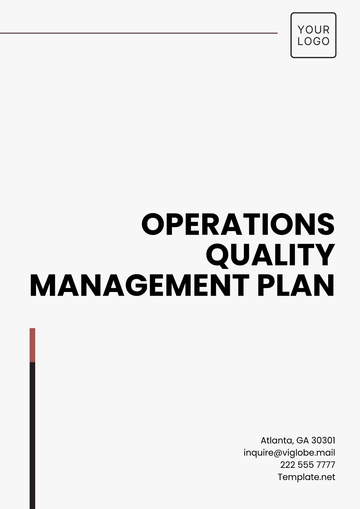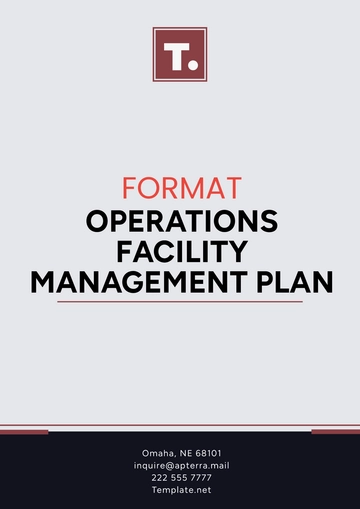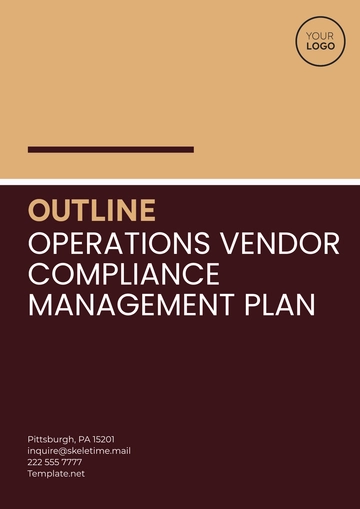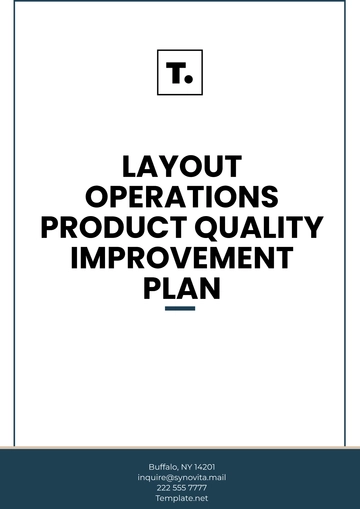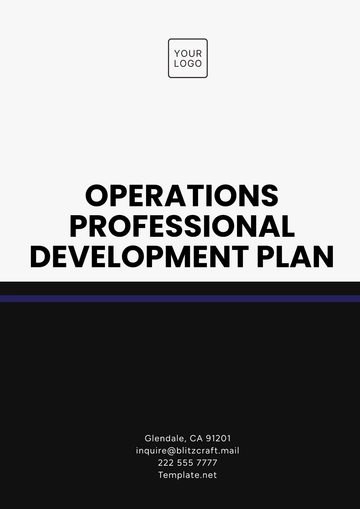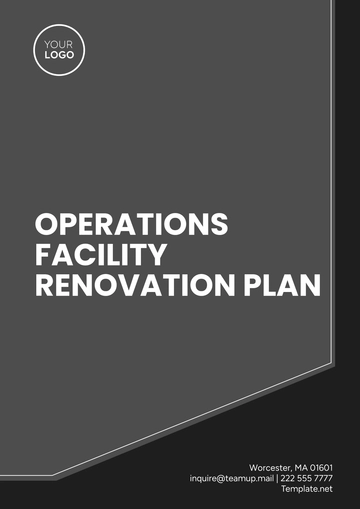Free Salon Operational Plan
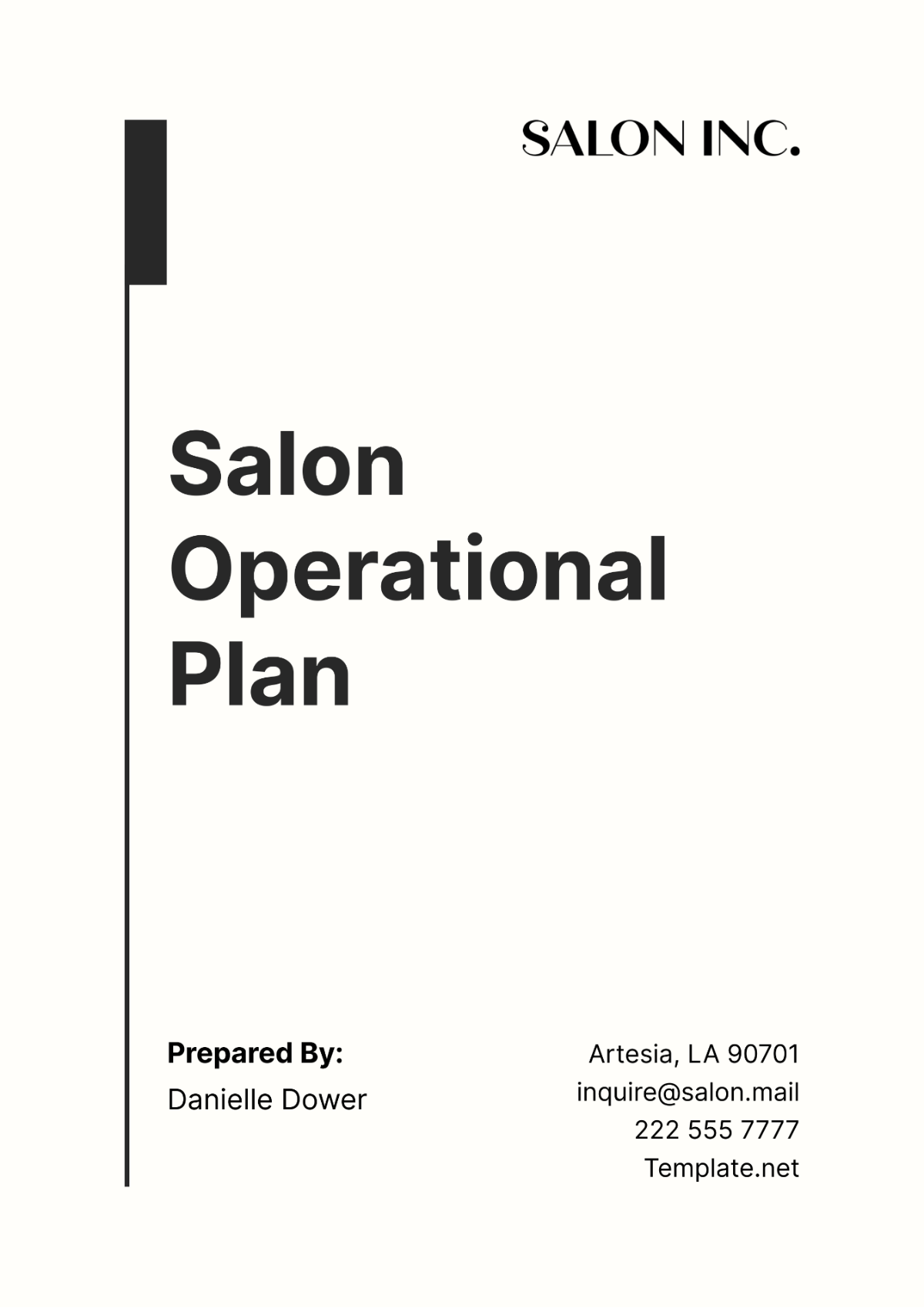
I. Introduction
A. Purpose of the Plan
The purpose of this operational plan is to ensure smooth day-to-day operations and provide the highest level of service to our clients. Here are the key objectives:
Operational Efficiency: The primary aim of this plan is to streamline salon operations. By having clear procedures in place, we can reduce downtime and increase productivity. This will allow us to serve more clients and improve the overall efficiency of our salon.
Client Satisfaction: Another objective is to enhance client satisfaction. By standardizing our procedures, we can provide consistent, high-quality service to our clients. This will help us build a loyal client base and improve our salon’s reputation.
Staff Management: Effective staff management is crucial for the success of our salon. This plan includes guidelines for managing staff, ensuring a positive work environment, and promoting teamwork. This will help us attract and retain talented professionals.
B. Overview of the Salon
[Your Company Name] is more than just a place to get a haircut. We offer a range of beauty and wellness services in a relaxing environment. Our team of skilled professionals is dedicated to providing each client with a personalized experience.
Our salon is conveniently located in [Your Company Address]. We pride ourselves on our welcoming atmosphere and our commitment to customer satisfaction. Our team consists of licensed professionals with years of experience in the beauty industry. They are passionate about their work and dedicated to providing the best service possible.
We offer a variety of services, including haircuts, styling, coloring, facials, and massages. Each service is tailored to the individual needs of our clients, ensuring they leave our salon looking and feeling their best. We also believe in promoting wellness through our services. Our salon is not just about enhancing physical appearance, but also about promoting overall well-being.
II. Opening Procedures
The opening procedures are crucial to ensure a smooth start to the day at the salon. They set the tone for the day and ensure that the salon is ready to provide excellent service to the clients. Here’s an overview of the steps involved:
No. | Step | Description |
|---|---|---|
1 | Cleanliness Check | Ensure the salon is clean and tidy. |
2 | Equipment Check | Verify all equipment is in working order. |
3 | Inventory Check | Check the inventory for any shortages. |
4 | Staff Briefing | Brief the staff on the day’s schedule and any special instructions. |
5 | Opening the Salon | Open the salon and welcome the first clients. |
A. Cleanliness Check
The cleanliness check is the first step in our opening procedures.
Check the Salon: The first step is to check the overall cleanliness of the salon. This includes the waiting area, workstations, and restrooms. A clean salon is inviting to clients and promotes a professional image.
Sanitize Equipment: Next, all equipment used in the salon should be sanitized. This includes hairdressing tools, chairs, and washbasins. Regular sanitization is crucial to maintain hygiene standards and ensure client safety.
Empty Trash Bins: All trash bins should be emptied and new liners should be placed. This helps to maintain a clean and odor-free environment.
Restock Supplies: Check and restock supplies like towels, robes, and capes. It’s important to have these items readily available when the salon opens.
Final Check: Do a final walk-through of the salon to ensure everything is in place and the salon is ready to welcome clients.
B. Equipment Check
The equipment check ensures that all salon equipment is in good working order.
Check Hairdressing Tools: Hairdressing tools like scissors, hairdryers, and straighteners should be checked to ensure they are working properly. Any faulty equipment should be reported and replaced.
Check Electrical Equipment: Electrical equipment like lights, air conditioners, and music systems should be checked. Any issues should be addressed immediately to ensure a comfortable environment for clients.
Check Plumbing: Check the plumbing in the salon, especially in the washbasins and restrooms. Any leaks or issues should be fixed promptly.
Check Furniture: Check the furniture in the salon for any damage. This includes chairs, tables, and cabinets. Damaged furniture should be repaired or replaced to ensure client comfort and safety.
C. Inventory Check
The inventory check ensures that the salon has all the necessary products and supplies for the day.
Check Product Inventory: Check the inventory of hair products, beauty products, and other supplies. Make a note of any items that are running low and need to be reordered.
Check Equipment Inventory: Check the inventory of equipment like hairdryers, scissors, and other hairdressing tools. Any missing or damaged equipment should be replaced.
Check Retail Inventory: If your salon sells products, check the retail inventory. Ensure that all products are properly displayed and the retail area is clean and inviting.
Update Inventory Records: After the inventory check, update the inventory records. This will help you track product usage and plan future orders.
Prepare for the Day: Based on the inventory check, prepare for the day. This might include restocking workstations, setting aside products for specific appointments, or placing orders for supplies.
D. Staff Briefing
The staff briefing is an important step to ensure everyone is on the same page and ready for the day.
Daily Schedule: Start by discussing the daily schedule. This includes the appointments for the day, any special clients or services, and the staff’s individual responsibilities.
Updates and Announcements: Share any updates or announcements. This could be about new products, changes in procedures, or upcoming events.
Feedback and Discussion: Allow time for feedback and discussion. This is an opportunity for the staff to share their ideas, concerns, or suggestions.
Motivation: End the briefing on a positive note. This could be a motivational quote, a word of appreciation, or a team cheer.
Start of Day: After the briefing, everyone should be ready to start the day. The salon should now be open to welcome clients.
E. Opening the Salon
The final step is to officially open the salon and start the day.
Welcome Sign: Put up the ‘Open’ sign and ensure that the entrance is clean and inviting.
Lighting and Music: Check the lighting and put on some soft, relaxing music. The ambiance of the salon plays a big role in the client’s experience.
Reception Desk: The reception desk should be manned and ready to greet clients, answer phone calls, and manage appointments.
Workstations Ready: All workstations should be clean, well-stocked, and ready for the first clients.
Start of Day: With everything in place, the salon is now ready to start the day. Welcome the first clients and provide them with the best possible service.
The opening procedures are a crucial part of the salon’s operations. They ensure that the salon is clean, well-stocked, and ready to serve clients. By following these procedures, the salon can provide a consistent, high-quality service experience to all clients. These procedures also help to create a positive work environment for the staff. A well-organized salon runs smoothly, which reduces stress and allows the staff to focus on their work.
III. Customer Service Procedures
Customer service is at the heart of any successful salon. It’s not just about providing beauty services, but also about ensuring a positive and enjoyable experience for every client. Here’s an overview of the steps involved:
No. | Step | Description |
|---|---|---|
1 | Greeting Clients | Warmly welcome each client and make them feel comfortable. |
2 | Consultation | Discuss the client’s needs and preferences to determine the best services. |
3 | Providing Services | Deliver high-quality services while ensuring client comfort. |
4 | Payment and Scheduling | Handle payment and schedule future appointments. |
5 | Farewell | Thank the client and invite them to visit again. |
A. Greeting Clients
The first impression is crucial in setting the tone for the client’s entire visit.
Warm Welcome: As soon as a client enters the salon, they should be greeted with a warm and friendly welcome. This helps to make them feel valued and sets a positive tone for their visit.
Comfortable Waiting Area: If the client has to wait, ensure they are comfortable. Offer them a seat and something to drink. The waiting area should be clean and inviting.
Prompt Attention: Clients should not have to wait long before they are attended to. Even if the salon is busy, acknowledge the client’s presence and let them know how long they will have to wait.
Personal Touch: If possible, greet returning clients by name. This personal touch can make clients feel special and appreciated.
Positive Atmosphere: The overall atmosphere of the salon plays a big role in the client’s experience. It should be positive, friendly, and professional.
B. Consultation
The consultation is a crucial step in understanding the client’s needs and expectations.
Understanding Needs: Start by asking the client about their needs and preferences. This could be about the type of service they want, their budget, or any specific concerns they have.
Expert Advice: Based on the client’s needs, provide expert advice on the best services or treatments. This could also include advice on hair care, skincare, or other relevant topics.
Clear Communication: Ensure that the client understands what the service involves, how long it will take, and how much it will cost. Clear communication can prevent misunderstandings and ensure client satisfaction.
Client Comfort: Throughout the consultation, ensure that the client is comfortable. This includes physical comfort, such as offering a comfortable chair, and emotional comfort, such as being respectful and attentive.
C. Providing Services
The quality of the services provided is crucial for client satisfaction.
Professional Service: All services should be provided in a professional manner. This includes using high-quality products, following the latest techniques, and maintaining high standards of hygiene.
Client Comfort: Throughout the service, ensure that the client is comfortable. This could involve checking the temperature of the water, the comfort of the chair, or asking if the client needs anything.
Attention to Detail: Pay attention to the small details. This could be as simple as neatly folding the client’s coat, playing relaxing music, or offering a refreshing drink.
Personalized Service: Each client is unique, and the service should reflect this. Personalize the service based on the client’s preferences, such as their preferred hairstyle, favorite drink, or preferred level of conversation.
Quality Check: Before the client leaves the workstation, do a final check to ensure the service is up to standard. Ask the client if they are satisfied and make any necessary adjustments.
D. Payment and Scheduling
Handling payment and scheduling future appointments is an important part of customer service.
Payment Processing: After the service is completed, process the client’s payment. This could be in the form of cash, credit/debit card, or digital payment. Ensure the process is smooth and quick.
Receipt: Provide a receipt to the client. The receipt should clearly list the services provided, the cost, and the total amount paid.
Future Appointments: Ask the client if they would like to schedule their next appointment. If they do, schedule it according to their convenience and provide them with an appointment card or digital reminder.
Promotions or Packages: Inform the client about any ongoing promotions or packages that they might be interested in. This could be a discount on a particular service, a package deal, or a loyalty program.
Feedback: Ask the client for their feedback. This could be done verbally or through a feedback form. Feedback is crucial for continuous improvement and client satisfaction.
E. Farewell
The farewell is the last step of the customer service procedure, but it’s just as important as the first.
Gratitude: Thank the client for their visit. A simple ‘Thank you’ can make the client feel appreciated and valued.
Goodbye: Say goodbye to the client. This should be done in a friendly and professional manner.
Invite to Return: Invite the client to visit again. This could be a general invitation or tied to their next appointment if they have scheduled one.
Follow-Up: Depending on your salon’s policy, you might also have a follow-up procedure. This could be a follow-up call or email to ensure the client is satisfied with the service.
End of Service: With the farewell, the service procedure comes to an end. The client leaves the salon, and the staff is ready to welcome the next client.
The customer service procedures are a crucial part of the salon’s operations. They ensure that every client has a positive and enjoyable experience at the salon. By following these procedures, the salon can build a loyal client base and a strong reputation.
IV. Closing Procedures
Closing procedures are just as important as opening procedures. They ensure that the salon is left clean, secure, and ready for the next business day. Here’s an overview of the steps involved:
No. | Step | Description |
|---|---|---|
1 | Cleaning | Clean the salon thoroughly. |
2 | Equipment Check | Check and turn off all equipment. |
3 | Inventory Check | Check the inventory and note any items that need to be reordered. |
4 | Security Check | Ensure the salon is secure. |
5 | Closing the Salon | Officially close the salon for the day. |
A. Cleaning
Cleaning is a crucial part of closing procedures to maintain a clean and hygienic environment.
Workstations: Each workstation should be cleaned and tidied. This includes cleaning tools, disposing of any waste, and wiping down surfaces.
Common Areas: Common areas such as the waiting area, restrooms, and break room should be cleaned and tidied. This includes vacuuming or sweeping, wiping down surfaces, and emptying trash bins.
Products and Equipment: Products and equipment should be properly stored. This helps to keep the salon tidy and prolongs the life of the products and equipment.
Windows and Mirrors: Windows and mirrors should be cleaned to remove any smudges or fingerprints. Clean windows and mirrors enhance the overall appearance of the salon.
Final Check: Do a final walk-through of the salon to ensure all areas have been cleaned and the salon is ready for the next business day.
B. Equipment Check
The equipment check ensures all equipment is turned off and stored properly.
Turn Off Equipment: All salon equipment should be turned off. This includes hairdryers, straighteners, and any other electrical equipment.
Store Equipment: Equipment should be properly stored. This helps to keep the salon tidy and prolongs the life of the equipment.
Check Electrical Outlets: Check all electrical outlets to ensure they are free from any potential hazards, such as overloaded sockets or frayed cords.
Maintenance Check: Do a quick maintenance check. If any equipment needs repair or replacement, make a note of it and plan to address it before the next business day.
C. Inventory Check
The inventory check ensures the salon has all the necessary products and supplies for the next business day.
Check Product Inventory: Check the inventory of hair products, beauty products, and other supplies. Make a note of any items that are running low and need to be reordered.
Check Equipment Inventory: Check the inventory of equipment like hairdryers, scissors, and other hairdressing tools. Any missing or damaged equipment should be replaced.
Update Inventory Records: After the inventory check, update the inventory records. This will help you track product usage and plan future orders.
Prepare for the Next Day: Based on the inventory check, prepare for the next day. This might include restocking workstations, setting aside products for specific appointments, or placing orders for supplies.
D. Security Check
The security check ensures the salon is secure at the end of the day.
Lock Doors and Windows: All doors and windows should be securely locked.
Check Alarm System: If the salon has an alarm system, ensure it is working and activated.
Secure Cash: Any cash in the salon should be counted and securely stored or deposited.
Secure Confidential Information: Any confidential information, such as client records, should be securely stored.
Final Check: Do a final walk-through of the salon to ensure everything is secure.
E. Closing the Salon
The final step is to officially close the salon for the day.
Turn Off Lights: All lights should be turned off, except any necessary security lights.
Adjust Thermostat: Adjust the thermostat to an appropriate temperature for when the salon is closed.
Final Check: Do a final walk-through to ensure everything is in order.
Lock Up: Lock the main entrance and double-check that it is secure.
End of Day: With everything in place, the salon is now closed for the day.
The closing procedures are a crucial part of the salon’s operations. They ensure that the salon is clean, secure, and ready for the next business day. By following these procedures, the salon can maintain a high standard of service and a professional image.
V. Staff Management
A. Roles and Responsibilities
Here are some of the key roles in a salon and their comprehensive responsibilities:
Salon Manager: Overseeing all operations of the salon falls under the purview of the Salon Manager.
1.1. Operational Oversight: Ensuring the smooth running of the salon, from managing staff schedules to overseeing inventory, is a key responsibility.
1.2. Financial Management: Maintaining the financial health of the salon, including budgeting, expense tracking, and revenue growth, is another important task.
1.3. Conflict Resolution: Handling any issues or conflicts that arise, whether among staff or with clients, and working towards a resolution is also part of the role.
1.4. Continuous Improvement: Regularly reviewing and updating salon procedures and practices for continuous improvement is a crucial aspect of the job.
Hair Stylists: Providing a variety of hair services is the main role of Hair Stylists.
2.1. Service Delivery: Delivering high-quality results that meet client expectations is a must.
2.2. Trend Awareness: Staying up-to-date with the latest hair trends and techniques brings fresh ideas to the salon.
2.3. Client Consultation: Understanding clients’ needs and preferences, and providing recommendations based on their expertise is part of their daily tasks.
2.4. Hygiene and Safety: Maintaining high standards of hygiene and safety, ensuring all tools are properly sanitized and safe to use, is non-negotiable.
Beauty Therapists: Offering a range of beauty treatments is what Beauty Therapists do best.
3.1. Service Delivery: Providing beauty services such as facials, massages, and waxing, tailored to each client’s needs, is a key responsibility.
3.2. Product Knowledge: Having a thorough understanding of various beauty products and treatments allows them to advise clients effectively.
3.3. Client Comfort: Ensuring client comfort throughout each treatment creates a relaxing and enjoyable experience.
3.4. Hygiene and Safety: Adhering to strict hygiene and safety standards ensures all treatments are carried out safely and effectively.
Receptionist: Often the first point of contact for clients, the Receptionist sets the tone for their salon experience.
4.1. Client Greeting: Warmly welcoming each client and making them feel comfortable is a must.
4.2. Appointment Management: Managing appointments ensures a smooth flow of clients throughout the day.
4.3. Payment Processing: Handling payment transactions with accuracy and efficiency is crucial.
4.4. Salon Knowledge: Having a good understanding of the salon’s services allows them to answer client queries effectively.
Cleaners: Cleaners play a vital role in maintaining the cleanliness and hygiene of the salon.
5.1. Cleaning Duties: Cleaning all areas of the salon, including workstations, common areas, and restrooms, is a key task.
5.2. Waste Management: Managing waste disposal, ensuring trash bins are emptied regularly and waste is disposed of properly, is important.
5.3. Laundry Management: Managing the laundry of salon towels and robes ensures a constant supply of clean linens.
5.4. Hygiene Standards: Adhering to high standards of hygiene contributes to a clean and inviting salon environment.
B. Schedule
Effective scheduling is a critical aspect of staff management in a salon. It ensures that there are enough staff members to provide services at any given time, and that each staff member has a balanced workload. The following table provides a sample schedule for salon operations:
Time | Activity |
|---|---|
8:00 AM | Salon Opening: Cleaners start their shift, ensuring the salon is clean and ready for the day. |
8:30 AM | Staff Arrival: All staff arrive and prepare for the day. The Salon Manager conducts a brief meeting to discuss the day’s schedule and any special instructions. |
9:00 AM | Client Services Begin: Hair Stylists and Beauty Therapists start providing services to clients. The Receptionist manages client check-in and check-out. |
12:00 PM - 2:00 PM | Lunch Breaks: Staff take staggered lunch breaks to ensure continuous service availability. |
2:00 PM - 5:00 PM | Client Services Continue: Staff continue to provide services to clients. The Salon Manager monitors operations and addresses any issues. |
5:00 PM | Last Client Check-In: The last client of the day checks in. |
6:00 PM | Client Services End: All client services for the day are completed. |
6:00 PM - 7:00 PM | Closing Procedures: Staff clean their workstations, restock supplies, and prepare for the next day. The Salon Manager reviews the day’s operations and makes notes for the next day. |
7:00 PM | Salon Closing: The Salon Manager ensures everything is in order, secures the salon, and the salon is closed for the day. |
A well-planned schedule is more than just a timetable; it’s a powerful tool that can significantly impact the productivity of the salon and the satisfaction of both staff and clients. It ensures that the salon operations flow smoothly, with minimal downtime and maximum efficiency. It also helps in managing the workload of the staff, preventing burnout and promoting a healthy work-life balance.
Moreover, a good schedule takes into account the peak hours of the salon, ensuring that there are enough staff members during these times to cater to the increased demand. It also allows for regular breaks for the staff, which are crucial to maintain high service quality and staff morale.
Generally, effective scheduling is a vital part of the salon’s operational plan. It contributes to the smooth running of the salon, the well-being of the staff, and the satisfaction of the clients. By investing time and thought into creating a well-planned schedule, [Your Company Name] can ensure a harmonious and productive work environment and deliver a superior service experience to its clients.
VI. Conclusion
The Operational Plan for [Your Company Name] serves as a comprehensive plan for managing the day-to-day operations of the salon. It outlines clear procedures for opening and closing, provides a detailed schedule for staff management, and emphasizes the importance of excellent customer service. These elements work together to ensure a smooth workflow, high-quality services, and a positive experience for both staff and clients.
In conclusion, the plan is a crucial component of [Your Company Name]'s success. It provides a roadmap for the salon’s operations, guiding staff members and ensuring client satisfaction. By adhering to this plan, [Your Company Name] can continue to provide excellent services, maintain a positive work environment, and achieve its business goals.
- 100% Customizable, free editor
- Access 1 Million+ Templates, photo’s & graphics
- Download or share as a template
- Click and replace photos, graphics, text, backgrounds
- Resize, crop, AI write & more
- Access advanced editor
Ensure efficient salon operations easily with our Salon Operational Plan Template! This customizable resource from Template.net provides a detailed blueprint for managing day-to-day activities. By utilizing the editable features and AI Editor Tool, you can customize the template to address key operational areas without the hassle! Get started right away!
You may also like
- Finance Plan
- Construction Plan
- Sales Plan
- Development Plan
- Career Plan
- Budget Plan
- HR Plan
- Education Plan
- Transition Plan
- Work Plan
- Training Plan
- Communication Plan
- Operation Plan
- Health And Safety Plan
- Strategy Plan
- Professional Development Plan
- Advertising Plan
- Risk Management Plan
- Restaurant Plan
- School Plan
- Nursing Home Patient Care Plan
- Nursing Care Plan
- Plan Event
- Startup Plan
- Social Media Plan
- Staffing Plan
- Annual Plan
- Content Plan
- Payment Plan
- Implementation Plan
- Hotel Plan
- Workout Plan
- Accounting Plan
- Campaign Plan
- Essay Plan
- 30 60 90 Day Plan
- Research Plan
- Recruitment Plan
- 90 Day Plan
- Quarterly Plan
- Emergency Plan
- 5 Year Plan
- Gym Plan
- Personal Plan
- IT and Software Plan
- Treatment Plan
- Real Estate Plan
- Law Firm Plan
- Healthcare Plan
- Improvement Plan
- Media Plan
- 5 Year Business Plan
- Learning Plan
- Marketing Campaign Plan
- Travel Agency Plan
- Cleaning Services Plan
- Interior Design Plan
- Performance Plan
- PR Plan
- Birth Plan
- Life Plan
- SEO Plan
- Disaster Recovery Plan
- Continuity Plan
- Launch Plan
- Legal Plan
- Behavior Plan
- Performance Improvement Plan
- Salon Plan
- Security Plan
- Security Management Plan
- Employee Development Plan
- Quality Plan
- Service Improvement Plan
- Growth Plan
- Incident Response Plan
- Basketball Plan
- Emergency Action Plan
- Product Launch Plan
- Spa Plan
- Employee Training Plan
- Data Analysis Plan
- Employee Action Plan
- Territory Plan
- Audit Plan
- Classroom Plan
- Activity Plan
- Parenting Plan
- Care Plan
- Project Execution Plan
- Exercise Plan
- Internship Plan
- Software Development Plan
- Continuous Improvement Plan
- Leave Plan
- 90 Day Sales Plan
- Advertising Agency Plan
- Employee Transition Plan
- Smart Action Plan
- Workplace Safety Plan
- Behavior Change Plan
- Contingency Plan
- Continuity of Operations Plan
- Health Plan
- Quality Control Plan
- Self Plan
- Sports Development Plan
- Change Management Plan
- Ecommerce Plan
- Personal Financial Plan
- Process Improvement Plan
- 30-60-90 Day Sales Plan
- Crisis Management Plan
- Engagement Plan
- Execution Plan
- Pandemic Plan
- Quality Assurance Plan
- Service Continuity Plan
- Agile Project Plan
- Fundraising Plan
- Job Transition Plan
- Asset Maintenance Plan
- Maintenance Plan
- Software Test Plan
- Staff Training and Development Plan
- 3 Year Plan
- Brand Activation Plan
- Release Plan
- Resource Plan
- Risk Mitigation Plan
- Teacher Plan
- 30 60 90 Day Plan for New Manager
- Food Safety Plan
- Food Truck Plan
- Hiring Plan
- Quality Management Plan
- Wellness Plan
- Behavior Intervention Plan
- Bonus Plan
- Investment Plan
- Maternity Leave Plan
- Pandemic Response Plan
- Succession Planning
- Coaching Plan
- Configuration Management Plan
- Remote Work Plan
- Self Care Plan
- Teaching Plan
- 100-Day Plan
- HACCP Plan
- Student Plan
- Sustainability Plan
- 30 60 90 Day Plan for Interview
- Access Plan
- Site Specific Safety Plan


